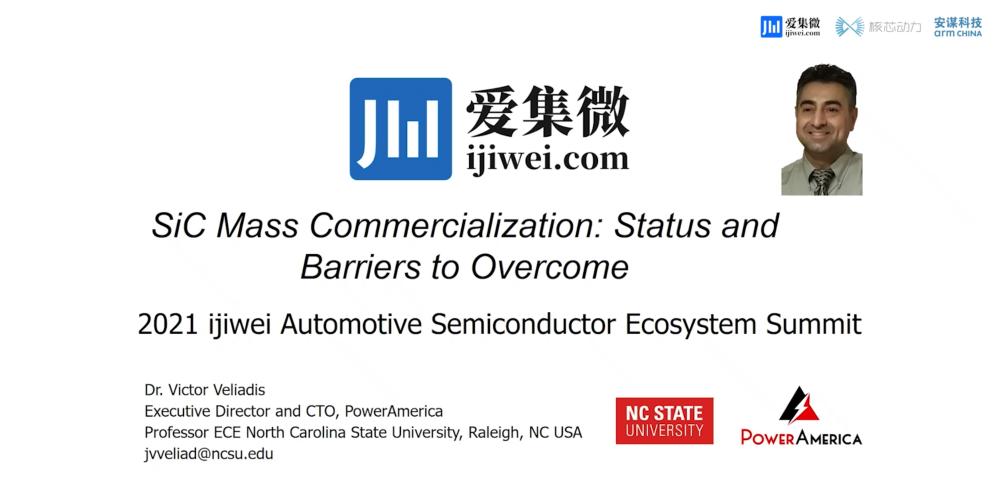
Jiwei Network News, on December 24, the first Jiwei Automotive Semiconductor Ecology Summit was held in the form of online + offline. Victor Veliadis, Managing Director and Chief Technology Officer of PowerAmerica, delivered a presentation entitled "The Battle Between SiC and Traditional Silicon Technologies: The Status Quo and the Dilemma."
Victor Veliadis began by saying that companies that have the ability to support advanced silicon wafer manufacturing technology are very at least, but in addition to storage and logic chips, there are many areas that have the opportunity to make a profit, such as the Internet of Things, AI, 5G, etc. In these areas, mature processes can still be put into chip production.
Silicon carbide power devices are large discrete devices that can withstand large currents and high blocking voltages. Based on voltage, current, frequency, efficiency, temperature and specific application considerations, at lower frequencies, silicon-based devices dominate, but when entering higher frequencies, switching losses will become larger and silicon-based device efficiency will decrease, which is a very competitive field for silicon carbide and gallium nitride.
Victor Veliadis pointed out that the 15-600V range is a competitive area for silicon-based devices, with the characteristics of reliability, ruggedness, cheapness and high current resistance; 100-900V, gallium nitride device advantages are prominent; 900V-10KV range, silicon carbide devices are basically a must.. And in the field of electric vehicles and power supply, there are many applications in the market of 650V, silicon-based devices and three and a half generations are very competitive.
Because of its high frequency and high power, silicon carbide is an important application scenario for silicon carbide under high voltage, automobiles, data centers, and space fields. According to the technology roadmap released by Yole, after 2021, the impetus for silicon carbide will come from electric and hybrid vehicles, which bring opportunities for large-scale commercialization of silicon carbide.
However, Victor Veliadis said that silicon carbide still has problems such as high equipment cost, reliability problems, and talent reserves that need to be solved urgently in large-scale commercialization. The process of manufacturing silicon carbide substrates is much more complex than silicon substrates, which means more labor and time is required, which will turn into higher costs. Silicon carbide starting wafers account for 50-70% of the cost of siC devices, and reducing wafer costs is the key to reducing the cost of SIC equipment.
Victor Veliadis said that silicon wafers had a size of 200mm in 1992, and the development of silicon carbide wafer size is 30 years behind that of silicon. The cost of silicon carbide components is usually 3 times higher than that of silicon devices, taking photovoltaic inverters as an example, the semiconductor cost of inverters made of silicon carbide as raw materials is three times higher than that of silicon materials, but the total cost is lower than that of silicon. He explained that silicon carbide can operate at higher frequencies, reducing the volume of the magnet's weight, further reducing the cost of passive components, and thus reducing the cost of the entire system.
Victor Veliadis also introduced the different points and difficulties of silicon carbide in the manufacturing process, and said that compared with silicon wafers, silicon carbide devices have competition in process and design, and many design companies, universities and start-ups will provide silicon carbide designs to help companies that want to enter the field to enter the market faster.